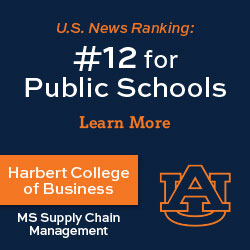Bees, Order Picking, and Self-Organizing Logistics Systems 2022
As we cruise into a Memorial Day holiday weekend here in the US, l considered doing my annual column on the Gartner Top 25 Supply Chains, release late this week for 2022.
But figuring many readers are probably taking today off or working lightly, I am waiting until next week for that. What I decided to do instead is pull a column off the shelf, going way to the way back machine - to 2007 in fact - for a column I titled "Bees, Order Picking and Self-Organizing Logistics Systems."
| GILMORE SAYS: |
WHAT DO YOU SAY?'
OK, like me you are probably saying "Has it been tried? Does it work?" Apparently Yes to both questions.
Send us your
Feedback here
|
I might have called it instead "Order Picking and Bucket Brigades."
In deciding to do a slightly edited repeat of that column, I learned some sad news: the protagonist, Dr. John Bartholdi III of the School of Industrial and Systems Engineering, Georgia Tech, had passed away in 2019.
But I feel good that by writing this column I am helping to keep his work, which I think you quite interesting, in circulation.
So what is "self-organizing logistics?" Well, it is has something to do, literally, with the birds and the bees, or I guess the bees and the ants. Somehow, Dr. Bartholdi observed bees in the hive are able to run incredibly effective "logistics" operations, without the benefit of software, pick-to-light systems, or other technology tools. Ditto with ant colonies.
In fact, the bees don't even have a boss. The queen gets royal treatment, but she doesn't tell the drones what to do.
So how do bees do it? As best we can tell, by self-organizing, based on simple signals from surrounding bees. "Each bee or ant in a colony follows some simple rule" Bartholdi told me in 2007. "Together, they achieve tremendous organization and effectiveness on a larger scale."
Somewhere along the way, Bartholdi got to wondering just whether there were applicable self-organizing concepts for supply chain and logistics systems. Turns out there are, and that Bartholdi had been writing about them since the mid-1990s
The most clear and proven opportunity to utilize the concept is in order picking in a distribution center, specifically for "piece" picking (the picking of individual items into a carton or tote).
It's always a high cost operation, and is now the normal mode in ecommerce fulfillment that wasn't much of a concern in 2007. Companies have tackled it with lots of process and technology improvements, including cluster picking, zone picking, Voice systems, Labor Management Systems, pick-to-light, now mobile robots, and more.
 All those have a place, and can add value, but are often based on a flawed concept, Bartholdi argued: these "work content models" (zones, etc.) are "almost always wrong in practice - it's just a guess." Because workers operate at different speeds, both naturally, and at any given point, they become bottlenecks, and slow down the effectiveness of the whole. All those have a place, and can add value, but are often based on a flawed concept, Bartholdi argued: these "work content models" (zones, etc.) are "almost always wrong in practice - it's just a guess." Because workers operate at different speeds, both naturally, and at any given point, they become bottlenecks, and slow down the effectiveness of the whole.
The answer: self-organization. Forget zones, whether static or dynamically assigned. Each workers just does the next thing they are supposed to do (more in a moment), and adjacent workers respond. Voila - the line balances itself, and productivity and throughput are substantially increased.
"The concept is too darn simple - I can't make any money on it!" Bartholdi joked.
It works like this: each worker starts down a pick line, at the speed they can accomplish given their skill and the difficulty of the next pick. When the last worker finishes his/her pick at the end of the pick line, he or she walks back upstream to take over the work of their predecessor, who walks back and takes over the work of his or her predecessor and so on.
This continues until, after relinquishing his/her picks, the first worker walks back to the start to begin a new set of orders/picks.
If you also then sequence the workers from slowest to fastest, Bartholidi calls the system a "Bucket Brigade," and the workers will spontaneously gravitate to the optimal division of work so that throughput is maximized.
Let me try to paint the picture another way. When the last/fastest worker gets done, he/she simply walks upstream until he/she encounters the picker behind them, and takes over any picks from wherever the hand-off occurred. That worker does the same, etc., until the first picker returns to the beginning of the line.
OK, like me you are probably saying "Has it been tried? Does it work?" Apparently Yes to both questions. But these are dated examples, and it's not clear if it's still in practice.
Bartholdi's Bucket Brigade web site is still out there, looking untouched for many years. It list a number of successes. Like many things, it seems to have found something of a home in one industry segment, that being music/video/books. But I see no reason why it should be limited to this sector. The concept apparently was successfully deployed at some time by:
• McGraw-Hill
• The MusicLand Group
• Time Warner Trade Publishing/Little, Brown
• Bantam-Doubleday-Dell Distribution
• Harcourt-Brace
• Blockbuster Music
Drug store chain CVS at some point achieved a 34% productivity increase from the Bucket Brigade approach. "Most companies see a 25-50% gain," Bartholdi told me in 2007.
The concept is especially applicable for anyone using pick-to-light, as the hand-off between workers would be totally seamless. There would be a bit more overhead in that hand-off with other picking technologies, but Bartholdi says the benefits apply there as well.
There are some limitations - you need fairly dense picks/higher volumes to really see the benefits. But then again, that's where costs are high.
Is this concept still alive? Anyone using it?
I'd love hear you story: you can email me at dgilmore at scdigest.com
What do you think of this approach to order picking? Have you tried it? Using it now? Let us know your thoughts at the Feedback button (email) or section below.
|







 All those have a place, and can add value, but are often based on a flawed concept, Bartholdi argued: these "work content models" (zones, etc.) are "almost always wrong in practice - it's just a guess." Because workers operate at different speeds, both naturally, and at any given point, they become bottlenecks, and slow down the effectiveness of the whole.
All those have a place, and can add value, but are often based on a flawed concept, Bartholdi argued: these "work content models" (zones, etc.) are "almost always wrong in practice - it's just a guess." Because workers operate at different speeds, both naturally, and at any given point, they become bottlenecks, and slow down the effectiveness of the whole.


